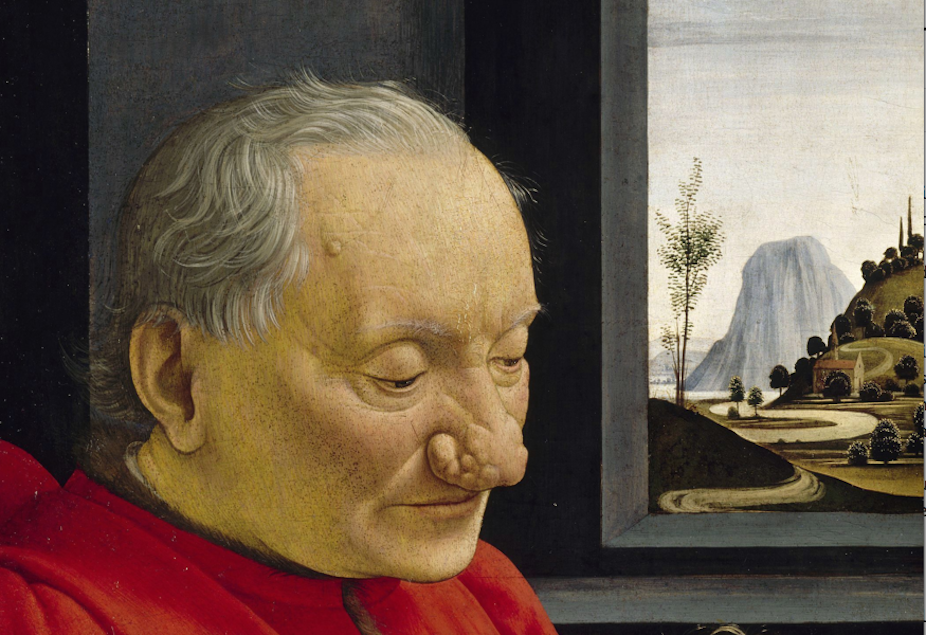This is part of our series on hidden or stigmatised health conditions in men. Read the other articles in the series here.
Many people will have seen a middle-aged or elderly man with an abnormally big red nose, whether it’s in real life or in classical paintings. Most think of it as synonymous with alcoholism, however it’s a real condition not caused by alcohol.
It’s caused by a common skin condition called rosacea. If the rosacea is not properly treated or controlled, within a few years the nose can grow and become bulbous. This is the condition rhinophyma.
Rosacea is a chronic skin condition that causes a red rash on the face. In rhinophyma, inflammation from rosacea and sometimes pressure from glasses pushing heavily on the bridge of the nose can cause proteins in the skin to stagnate and water to accumulate between the cells of the skin. This excess of fluid in the skin (lymph) is called lymphoedema.

This protein-rich fluid causes further inflammation in the skin that transforms the initially soft swollen tissue into a harder tissue with stiffer, thicker skin in cases that have progressed for a long time. The sebaceous glands (which produce oil in the skin) dilate greatly, which is why the pores on the nose appear so large. If squeezed the pores will leak a white paste full of dead skin.
The nose appears deformed, with thickening and bulbous lumps distorting the shape. The surface is often red and has more obvious blood vessels. The skin often looks like orange peel because of the enlarged pores. The process affects mainly the lower two-thirds of the nose.
We’re not certain about why it mostly affects men, but think likely causes include that they are more likely to work outside, and less likely to seek treatment for rosacea.
Origins
Rosacea has a genetic and an ethnic predisposition – it runs in families, typically those of fair-skinned heritage such as English, Irish, Scottish, Scandinavian and similar descents.
There is evidence alcohol, especially red wine, is among the scores of different triggers that can prompt or aggravate rosacea flare-ups in patients. This is why rhinophyma is often wrongly associated with alcohol abuse. The biggest three influences of flare-ups are usually sunlight, heat and environmental stress (like working in dusty or dirty environments).

However in this type of rosacea, Demodex mites are an important potential trigger. Demodex are tiny mites with eight legs that live in the hair follicle and oil glands of the face.
They are less than half a millimetre in length meaning they are invisible to the naked eye but under the microscope their structure is clearly visible. Most cases have a prominent colonisation (more than five times normal) of Demodex.
The rosacea may begin first anywhere in the central face however in this form the nose is always the worst affected area. In rhinophymatous rosacea the inflammation is usually more aggressive, with tender red lumps on the nose and pimple-like pustules occurring frequently.
If rosacea can be controlled at an early stage then it is unlikely to progress to rhinophyma. The dermatologist will be able to recommend the most appropriate treatment of the rosacea to prevent rhinophyma if started early enough.
There are a number of creams and tablets available to treat rosacea. Ivermectin cream (a cream for mites) specifically targets the demodex and is often very useful in this type of Rosacea. Antibiotics from the local doctor can help and in resistant cases there are dermatologist restricted retinoids (like Vitamin A) available. Cortisone creams are best avoided as these can worsen the condition and even in some people cause a rosacea-type of rash.
Treatment
Once the nose has significantly enlarged, there are a few ways to normalise the appearance. Excess skin can be removed with surgical excision, electrocautery (electrically heated needle), or laser.
New forms of laser used by dermatologists (called “Erbium YAG” laser) are giving the best results. With treatment, parts of the nose can scar when the operator is trying to restore the shape of the nose and there are not enough skin cells to cover the area because of the large gaping pores.
Some will also lose the normal tan in the nose after the procedure. The main problem with some of the surgical sculpturing techniques is that it is difficult to get as smooth a contour. Bleeding leads to poor visibility, making tissue removal much less precise and is most problematic in the surgical approach.
The Erbium YAG laser procedure starts with anaesthetising the nose. If the nerves that supply the nose can be injected away from the nose initially, the discomfort of the local anaesthetic can be reduced. General anaesthetic is possible but adds an unnecessary risk.
Once the nose is completely numb the laser is employed to vaporise the unwanted tissue. The nose then takes two weeks or so to grow the surface skin back in place and heal. The condition will only come back if the rosacea is not controlled.
Further reading:
Dads get postnatal depression too
Men more reluctant to go to the doctor - and it’s putting them at risk
Breast cancer campaigns might be pink, but men get it too
How’s your walnut, mate? Why men don’t like to talk about their enlarged prostate
Klinefelter’s syndrome: being unable to produce testosterone has serious implications for men
Hypospadias: the cause of penis malformation is still a matter of debate

